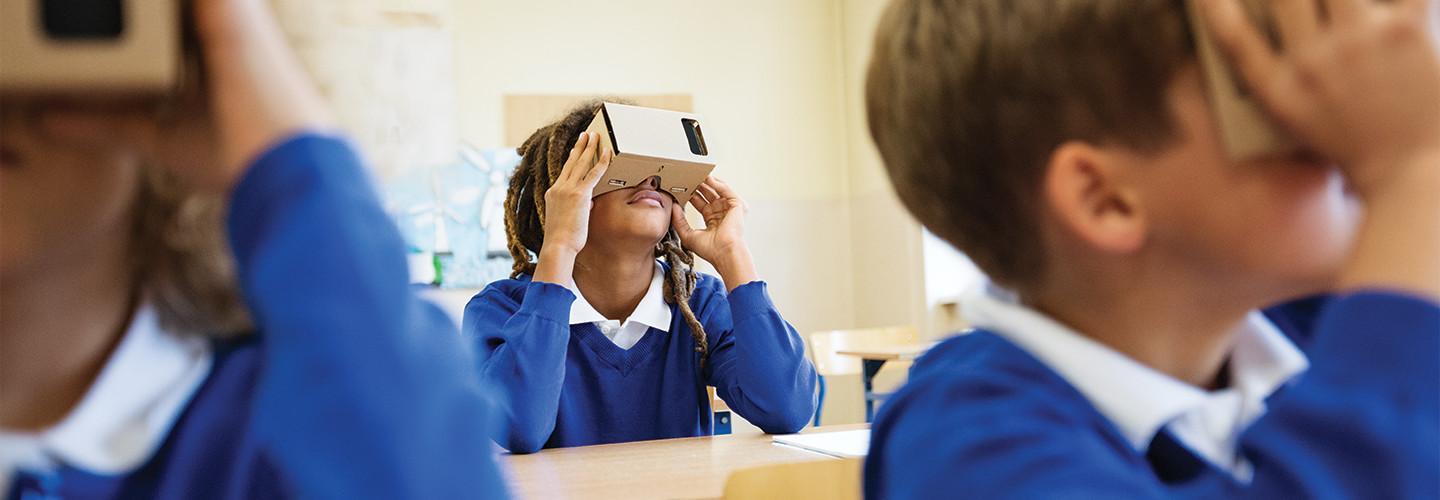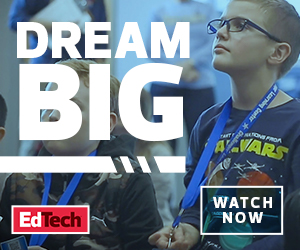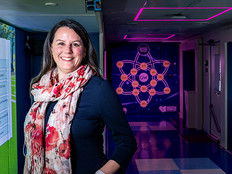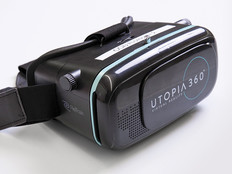Fitting VR into the ‘Triple E’
Spike grounds his approach to VR use in the ‘Triple E’ Framework, an educational model developed in 2011 by Liz Kolb, a clinical associate professor of education and learning technologies at the University of Michigan. It measures how a technology used in a lesson helps students meet learning goals.
The framework focuses on three components: engagement in learning goals, enhancement of learning goals and extension of learning goals. It offers a benchmark to guide educators as they consider adding a technology tool to learning.
How VR Technology Can Drive Student Engagement
Engagement is one area of learning and instruction where technology alights well with where students are focusing their time and energy. Today’s students are digital natives, after all, so it’s not surprising to find that VR technology offers a means to better immerse students in their learning.
During his presentation, Spike gave recommendations for VR-driven applications that educators can use to boost student engagement. He broke them down into the following categories: collaborative VR learning, communication and collaboration, narratives, puzzles and mindfulness.
For example, the app “Keep Talking and Nobody Explodes,” which he demonstrated at the beginning of his presentation, puts students’ puzzle-solving and communication skills to the test. How does it work? A student takes the role of the bomb defuser, which Spike played in his demonstration with his VR headset. Meanwhile, a small team of students take the role of experts who must guide the defuser through disarming all of the bomb’s modules using a manual before the timer expires.
VR Brings 'Value-Added' Enhancement of Learning
Spike went over several categories of VR apps that can help educators enhance student learning, such as collaborative design, VR creation, storytelling and even public speaking.
Specifically, these types of apps add value to learning by allowing students to explore, create, problem-solve and assess their work, which ultimately gives them a more well-rounded understanding of content, rather than simply memorizing facts.
One VR creation app Spike talked about was the Google Tour Creator, which lets students create and publish their own immersive, 360-degree tours. Users can upload their own panoramic photos or find one on Google Street view and highlight points of interest for their viewers. The app is also designed to work with the Google Cardboard headset and existing VR “field trips” on Google’s Expeditions app.
He also discussed the app “Virtual Speech,” which students can use to practice their soft skills in virtual environments such as seminar rooms and auditoriums. The app, which is compatible with several headsets such as Oculus Quest and Vive Focus, also gives students feedback on their presentation by capturing behavioral data.
READ MORE: Find out how VR is making its way into physical education classes.
With VR, Connecting Learning to the Authentic World Is Possible
One of the benefits of using VR technology is that students can learn about the world outside of their classroom without ever leaving it. VR extends the reach of education to wherever teachers imagine they want to take their students.
Spike shared apps teachers can use to do this, broken down by subjects such as biology and space, arts and culture, and news and media. Google offers the Arts and Culture VR app, which features artwork curated by over 1,200 museums and archives around the world that students can explore in a virtual reality tour setting. Even The New York Times has a VR app with immersive films on topics ranging from exploring Antarctica to the refugee crisis which educators can integrate into their curriculum.
The Hardware Needed to Run VR-Driven Apps
Spike also made it clear that there’s a great deal of VR content available for educators to use. But the other necessity for those who plan on plunging into the VR world is the hardware required to run those apps.
Thankfully, there are a variety of price points available to meet the VR needs of school districts across the budget spectrum, offering either three degrees of freedom or six degrees of freedom within the apps. Here are Spike’s recommendations, listed by least to most expensive:
- The Google Daydream View is an easy-to-use and lightweight headset. It’s made for cellphones and already comes with apps and hundreds of thousands of immersive videos. There’s also a foldable Cardboard version priced around $10 to $15.
- Oculus Go and Quest headsets are midrange VR headsets that bring a number of interactive possibilities such as immersive films, games and apps. The Oculus Go comes with a three-degree-of-freedom controller, allowing for rotational movement tracking, while the Quest is equipped with two six-degree-of-freedom controllers that support orientation and positional tracking.
- The HTC Vive, which has a six-degree-of-freedom setup, fits nicely in virtual reality labs where students can take detailed, 3D-rendered journeys and experience innovation in STEM learning.










